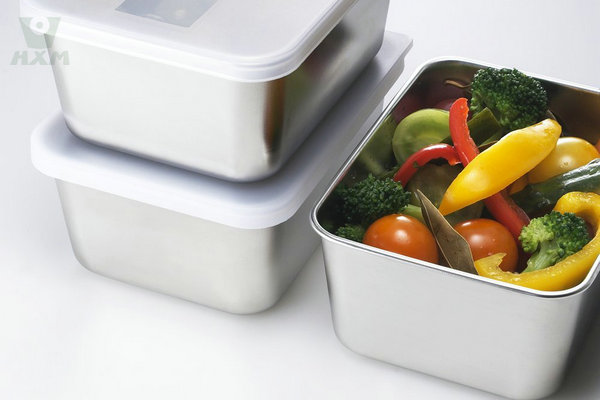In industries where corrosion resistance, strength, and reliability are crucial, choosing the right material for specific applications can significantly affect performance and longevity. Two such materials often compared are Monel metal vs stainless steel. Both are used in demanding environments like marine, chemical, and aerospace industries, but they offer different characteristics, making them suitable for different applications.
In this article, we’ll explore the key differences between Monel metal vs stainless steel, focusing on their cost, strength, hardness, and use cases to help you determine which is the best material for your needs.

What is Stainless Steel?
Stainless steel is a steel alloy with a minimum of 10.5% chromium content by mass, along with varying amounts of other metals like nickel, molybdenum, and carbon. The addition of chromium allows stainless steel to form a passive layer of chromium oxide, making it resistant to corrosion and staining. Stainless steel is a versatile material used in everything from household appliances to aerospace and medical applications. Among the many grades of stainless steel, 316 stainless steel is often compared to Monel because of its similar properties.
What is Monel Metal?
Monel metal is a trademarked name for a group of nickel-copper alloys. The most common alloy, Monel 400, contains 63% nickel and 28% copper, along with small amounts of iron, manganese, and carbon. Known for its excellent resistance to corrosion, particularly in harsh environments like seawater, Monel is widely used in marine engineering, chemical processing, and even aerospace. It also has excellent mechanical properties, including good strength at both low and high temperatures.
Monel Metal vs Stainless Steel: What Are Their Differences?
| Property | Monel | Stainless Steel |
|---|---|---|
| Cost | More expensive (high nickel content). | More affordable and widely available. |
| Corrosion Resistance | Exceptional, especially in seawater. | Excellent, but varies by grade (316 is superior to 304). |
| Strength | High strength, even at elevated temperatures. | Moderate to high, depending on grade. |
| Hardness | Higher than most stainless steels. | Variable; 316 is softer compared to Monel. |
| Magnetism | Non-magnetic. | Can be magnetic (e.g., ferritic types). |
| Applications | Marine, chemical, and high-stress environments. | Construction, medical, food processing, and general-purpose. |
Monel Metal vs Stainless Steel Chemical Composition:
| Material | Monel Metal (Alloy 400) | Stainless Steel (316) |
|---|---|---|
| Ni | 63% | 10-14% |
| Cu | 28-34% | <0.75% |
| Fe | Balance | Balance |
| Cr | <1% | 16-18% |
| Mn | 2.5% | 2% |
| Si | <0.5% | <1% |
| C | <0.03% | <0.08% |
| S | <0.024% | <0.03% |
Monel Metal vs Stainless Steel Mechanical Properties:
| Material | Monel Metal (Alloy 400) | Stainless Steel (316) |
|---|---|---|
| Tensile Strength | 70-85 ksi (485-585 MPa) | 70-90 ksi (485-620 MPa) |
| Yield Strength | 30-40 ksi (205-275 MPa) | 30-40 ksi (205-275 MPa) |
| Elongation | 35-45% | 40% |
| Hardness | 85 HRB (max) | 90 HRB (max) |
| Modulus of Elasticity | 150 GPa | 193 GPa |
Monel Metal vs Stainless Steel Physical Properties:
| Material | Monel Metal (Alloy 400) | Stainless Steel (316) |
|---|---|---|
| Density | 8.83 g/cm³ | 8.00 g/cm³ |
| Melting Point | 1,400°C (2,550°F) | 1,400–1,450°C (2,550–2,650°F) |
| Electrical Conductivity | 3.5% IACS | 1.4% IACS |
| Thermal Conductivity | 25 W/m·K | 16.3 W/m·K |
| Coefficient of Thermal Expansion | 13.3 µm/m·K | 16.0 µm/m·K |
| Magnetic Properties | Non-magnetic | Austenitic grades (non-magnetic); Ferritic and martensitic grades (magnetic) |
Monel Metal vs Stainless Steel Applications:
Monel Metal Applications:
Marine environments (e.g., seawater piping, propellers, and valves)
Chemical processing equipment
Aerospace components requiring corrosion resistance and strength
Oil and gas industry for heat exchangers and tanks

Stainless Steel Applications:
Food processing equipment and utensils (e.g., 304, 316 grades)
Medical instruments and implants
Construction and architecture (e.g., railings, cladding)
Automotive components and exhaust systems

Cost of Monel vs Stainless Steel:
Material cost plays a major role when choosing between monel and stainless steel. Monel is generally more expensive than stainless steel, primarily due to its high nickel and copper content, which drives up production costs. Stainless steel, especially 316 stainless steel, is more affordable, making it a popular choice across many industries. However, while stainless steel may be cheaper initially, monel’s superior corrosion resistance can provide long-term cost savings, especially in highly corrosive environments.
Monel Metal vs Stainless Steel Magnetism:
Monel Metal: Monel is non-magnetic under normal conditions, making it suitable for applications requiring non-magnetic properties, such as certain electronic and marine uses.
Stainless Steel: The magnetism of stainless steel depends on its grade:
Austenitic stainless steels (e.g., 304, 316) are generally non-magnetic, although cold working can induce slight magnetism.
Ferritic and martensitic stainless steels (e.g., 430, 410) are magnetic due to their structure.
Monel Metal vs Stainless Steel Weldability:
Monel Metal: Monel has good weldability but requires specialized welding techniques due to its high nickel and copper content. Processes like gas tungsten arc welding (GTAW) or shielded metal arc welding (SMAW) with compatible filler materials are preferred. Welding Monel demands experience to manage its high thermal conductivity and to avoid cracking.
Stainless Steel: Stainless steel, especially grades like 304 and 316, is easier to weld using common techniques such as MIG, TIG, or stick welding. It generally has lower thermal conductivity than Monel, making heat management during welding simpler. For demanding applications, appropriate filler materials are used to ensure corrosion resistance and strength.
Monel Metal vs Stainless Steel Machinability:
Monel Metal: Monel is known to be more difficult to machine due to its high nickel content, which makes it harder and more resistant to wear. Special tools, slower cutting speeds, and high lubrication are typically required during machining to prevent tool wear and overheating.
Stainless Steel: Stainless steel, especially grades like 316, offers better machinability compared to Monel. While harder grades can still be challenging, the process is more straightforward, and many stainless steel grades are available in improved machinability versions with added sulfur (e.g., 316F).
Monel vs Stainless Steel Strength:
Both Monel and stainless steel are strong materials, but they offer different properties:
Monel: Offers high tensile strength and toughness, particularly in low and high-temperature environments. It is resistant to stress corrosion cracking, which makes it ideal for chemical and marine environments.
Stainless Steel: 316 stainless steel, one of the strongest grades, is highly resistant to oxidation and corrosion, offering better tensile strength than Monel in some applications.
Monel 400 vs 316 Stainless Steel:
Corrosion Resistance: Monel 400 excels in marine and chemical environments, while stainless steel 316 is ideal for mildly corrosive conditions.
Cost: Stainless steel 316 is more affordable than Monel 400.
Applications: Monel 400 is better suited for extreme conditions, whereas 316 is commonly used in construction, medical, and food industries.
Monel Hardness vs Stainless Steel:
Monel is harder than many types of stainless steel, including 316 stainless steel, due to its higher nickel and copper content. This makes Monel suitable for applications where both hardness and corrosion resistance are required. However, stainless steel tends to be more ductile, which is useful in processes that require shaping or forming the material.

Monel Alloy
Monel Alloy Supplier and Manufacturer From China Monel Alloy is a high-performance alloy composed of nickel and copper, known for its excellent corrosion resistance and

Stainless Steel
Stainless Steel Suppliers From China Huaxiao is one of the leading stainless steel suppliers & manufacturers in China, we can provide stainless steel plates, stainless
Conclusion: Which is Better – Monel Metal vs Stainless Steel?
Both Monel vs stainless steel have their strengths, and the choice between them largely depends on the application.
- If you are dealing with highly corrosive environments, particularly in marine or chemical processing, Monel is the superior choice due to its excellent corrosion resistance, despite its higher cost.
- On the other hand, if you need a cost-effective material with good corrosion resistance for less aggressive environments, 316 stainless steel is a versatile and affordable option. It’s widely used in the food industry, medical devices, and general manufacturing.
Ultimately, the best material depends on your specific requirements, such as the level of corrosion resistance, strength, cost considerations, and the operating environment.
Need help choosing the right material for your project? Contact us today for expert advice on Monel and stainless steel, and get a quote tailored to your needs!








